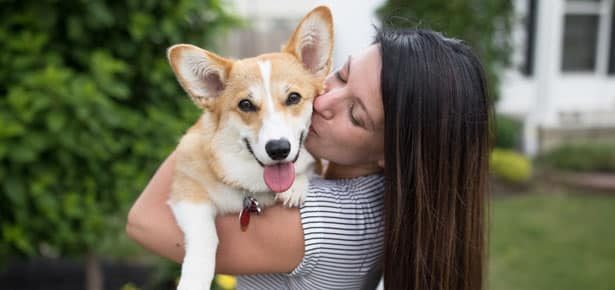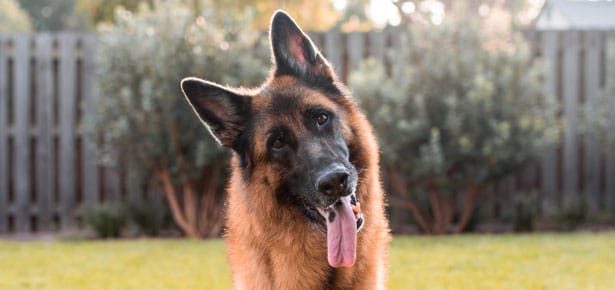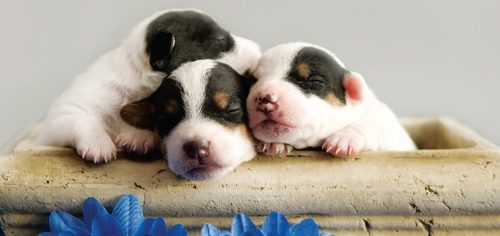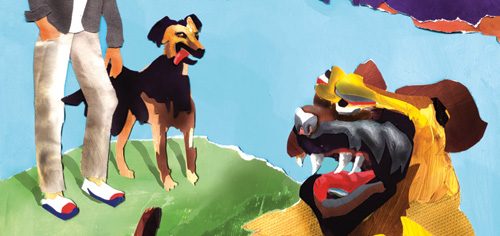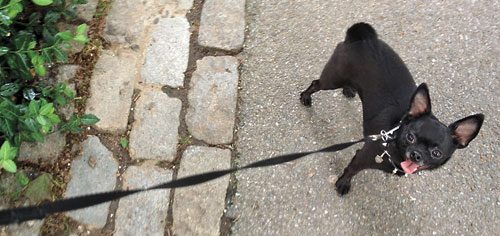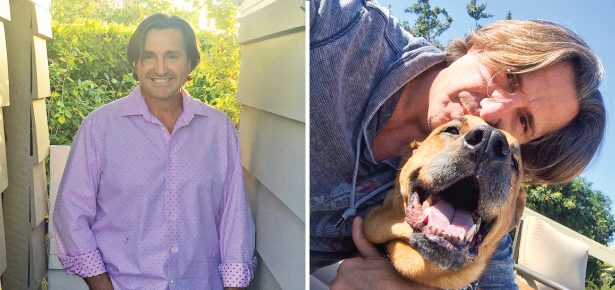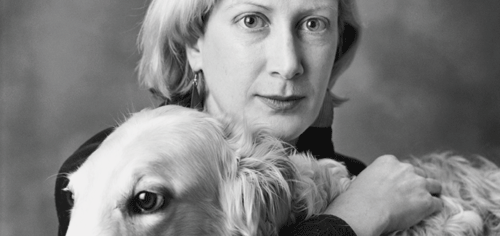
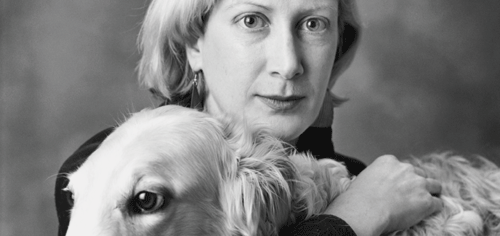
Do You Look Like Your Dog?
Chances are, the answer is yes.
At a gathering of dog owners, I found myself sitting at a table with a woman who was explaining, "You can always tell which member of a family actually picked the dog. People always pick dogs that look like themselves. If you want a well-known example of this, just take the case of Winston Churchill. Now there was a man who certainly looked like his pet Bulldog!"
Winston Churchill was, of course, the British prime minister who helped to guide England through the dark days of World War II. The fact that Churchill, in his mature years, looked like a Bulldog is indisputable. The round full face, the flattened features, the jowly cheeks, the large wide mouth, the skin folds around the eyes-all look much like those of the English Bulldog. It was interesting to note that the woman who had been speaking about him had long blond hair, which, paired with her tan-coloured pants and vest, certainly had a strong resemblance to her own dog-a Golden Retriever.
Actually, there are scientific explanations for why people might have a preference for dogs that look something like themselves. The data is quite clear that, at least when dealing with people, we certainly prefer those who are similar to us.
Do you ever wonder what the secret is behind the success of computerized dating services? It is nothing more than a matter of matching on the basis of similarity. These services give extensive questionnaires in order to find out some basic information about their clients, including their religion, their family's social status and income, their political beliefs, their taste in music, entertainment and sports, and so forth. Then they match people on the basis of as many dimensions as possible. The better the match, the more likely that people will develop an attraction for one another.
The interesting thing is that the research shows that if you want to predict whether people will like each other, you tend to do better if you include some physical aspects of the person's appearance along with measures of attitudes and personal history. How tall a person is, how much they weigh, their hair colour and skin tones, will all have an influence since people prefer others who share their physical characteristics as well. While most people like physically attractive people, the most successful matches involve pairing people of about the same degree of attractiveness. Thus, beautiful people are happiest with other beautiful people, average-looking people with average-looking partners- making it highly unlikely that in real life, the ugly, misshapen, Quasimodo of The Hunchback of Notre Dame would ever live happily ever after with the beautiful gypsy girl, Esmeralda.
There is some evidence that people tend to select dogs based on how similar that breed's personality is to their own. For example, the classic film actor Humphrey Bogart was known for the strong, rugged, roles that he played in motion pictures like The Maltese Falcon, Casablanca, and Treasure of the Sierra Madre. Director Howard Hawks once commented that "Bogey thinks that he has to live up to the reputation of all of those tough guys he plays." Hard-drinking and rowdy in his personal life, he always owned dogs with tough and self-sufficient characters, such as Boxers and Scottish Terriers.
Contrast this to another classic film actor, James Stewart. The American Film Institute observed Stewart was an actor "so beloved by the movie-going public that they call him ‘Jimmy,' just like a member of the family." He had a real-life personality that was similar to the warm, down-to-earth, friendly men that he played in films like You Can't Take It with You, Mr. Smith Goes to Washington and The Philadelphia Story. Stewart surrounded himself with dogs of the same temperament, namely Golden Retrievers.
You might feel that it would take quite a leap to get from the fact that we might select a dog that has a personality similar to ours and end up with the conclusion that we might choose a dog that looks like us as well. Yet there is a way to get there using a psychological mechanism that is subtle yet simple, namely familiarity.
Simply put, we like things that are familiar. This explains why we are so willing to read or view each new version of the King Arthur legend, or why people go back, year after year, to hear the same opera, and why radio stations that play only "oldies" are so popular. It explains why advertisers repeat the same ad so many times (they describe this as "repetition builds reputation"). It also explains why people vote for actors, and the sons, daughters or wives of well-known people without any knowledge of their actual competence for the elected position-it is simply because the name is so familiar that a positive feeling has grown up around it.
One scientist demonstrated this in an amusing way. He showed people a series of Chinese characters, without any translations of them. When the people were later asked to guess what these characters actually meant, the ones that had been shown a number of times (so they were now familiar) were more likely to be "translated" by people as meaning something positive and favourable.
Scientifically, we have now reached the important part of the story: your face. We all are quite familiar with our own face. We see it in the mirror every morning as we shave, put on make-up or comb our hair. We see images of our face thousands of times each year as we pass by various reflecting surfaces in the environment. Science, therefore, suggests that, as in the case of everything else that we have seen many times, we should be rather fond of it. It is also likely that we will also transfer some of that sentiment to anything that is similar enough to remind us of our face.
Some psychologists have argued that this explains why children who look very much like one of their parents tend to be favoured and treated more lovingly by that parent. It might also provide a link to why people end up with dogs that look something like themselves. If the general features of one breed of dog's face look something like the general features of our own face, then, all other things being equal, that breed should arouse a bit more of a warm and loving response on our part.
Since there had not been much scientific work done on the resemblance of dogs and their owners, I tested 104 women students enrolled at the University of British Columbia. First, they were shown slides containing dog portraits of four different dog breeds. Each portrait was simply the head of a dog looking toward the camera. The four dog breeds included an English Springer Spaniel, a Beagle, a Siberian Husky and a Basenji. For each dog, the women simply rated how much they liked the look of the dog, how friendly they thought it was, how loyal they thought it might be and how intelligent it appeared to be.
Afterwards, I asked some questions about the women and their lifestyles. As part of this, they were asked to look at a series of schematic sketches of hair styles and to indicate which was their own most typical hair style. I was not interested in details of their coiffure, but only in certain general characteristics. Specifically, I divided these hair styles into two groups: the first group contained longer hair styles that covered the ears, while the second group contained shorter hair or longer hair that was pulled back, so that the woman's ears were visible.
In general, women with longer hair covering their ears tended to prefer the Springer Spaniel and the Beagle, rating these breeds higher on the dimensions of likeable, friendly, loyal and intelligent. Women with shorter hair and visible ears tended to rate the Siberian Husky and the Basenji more highly on these same dimensions.
The reason for this result may have to do with familiarity effects on liking. Longer hair on a woman forms a framing effect around her face, which is much the same as the framing effect caused by the longer, lopped ears of the Spaniel or Beagle. Shorter hair gives more visible, unframed lines to the sides of the woman's face and allows her to see her own ears. Both the Siberian Husky and the Basenji lack the drooped ears that frame the face like long hair, and both have clearly visible pricked ears. Obviously, we are not talking about an overpowering effect on preference, since there were a number of women with short hair that preferred the long eared dogs and vice-versa. However, the size of this effect is large enough to be statistically reliable and could confirm the common belief that we look like our dogs to some degree.
Given that hairstyle variations of this sort are only sensible to talk about in women, this particular research model was somewhat limited, so Michael Roy and Nicholas Christenfeld, psychologists from the University of California at San Diego, decided to extend my research using another technique. They photographed 45 dogs (25 purebreds and 22 mongrels) and their owners, separately. They then showed photos of the owners to 28 volunteers and asked them to guess which was most likely that owner's dog from a pair of pictures containing the owned dog and another. A dog was regarded as resembling its owner if a majority of the volunteers matched the pair. The volunteers were able to correctly match purebred dogs with their owners in about two thirds of the cases. This seems to confirm that dogs and owners look alike.
There was an interesting quirk in the data, however. There was no link between the appearance of mixed-breeds and their owners. Co-researcher Christenfeld thought that this was reasonable.
"When you pick a purebred, you pick it specifically because of how it's going to look as a grown-up," he pointed out. "On the other hand, mutt owners like me make our choice on the spur of the moment at a dog shelter. The truth is that we really don't know what the grown puppy will look like."
So the science suggests that this bit of folk wisdom is correct. People do, indeed, tend to select dogs that look themselves. However, this is not a universal principal.
Let's go back to Winston Churchill, who many people claim as a perfect example since he clearly resembled his pet Bulldog. The problem is that Churchill did not own a Bulldog. The British often consider the Bulldog as the symbol of their country, and Churchill was the leading political figure in Britain. These facts are what probably led to the erroneous conclusion in the public mind that the great man also owned a Bulldog. Churchill's own dog certainly was not selected on the basis of visual similarities. If you could have looked into Churchill's bedroom, curled up around his feet on the bed you would have found a Miniature Poodle named Rufus. With his narrow pointed muzzle, clean, unwrinkled face and close-set eyes, this dog did not look even faintly like his master. This breed of dog was not merely some accidental match since, when the original Rufus died, his owner replaced him with another who looked virtually identical to the first one. "He is named Rufus II-but the II is silent," Churchill explained.
Still, despite the case of the prime minister and his Poodle, research does seem to show that the idea that dogs and their owners resemble each other is more likely to be true than false. And in Churchill's case-well, his daughter owned a Pug, which might be close enough!
Dr. Stanley Coren is professor of psychology at the University of British Columbia and author of many books on dog behaviour, including The Intelligence of Dogs, How Dogs Think and Why Does My Dog Act That Way? His website is stanleycoren.com.
Join the newsletter and never miss out on dog content again!
"*" indicates required fields
By clicking the arrow, you agree to our web Terms of Use and Privacy & Cookie Policy. Easy unsubscribe links are provided in every email.
